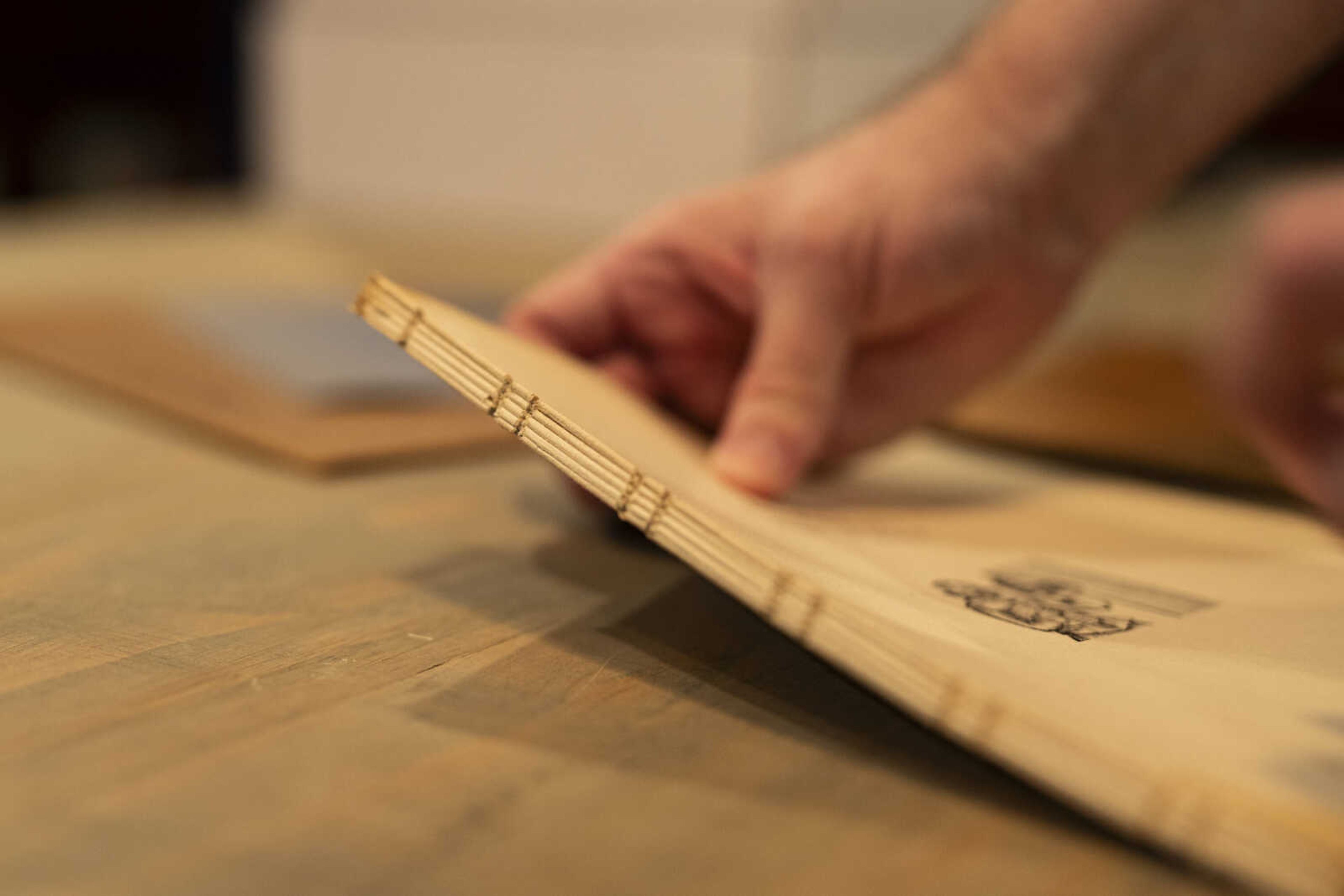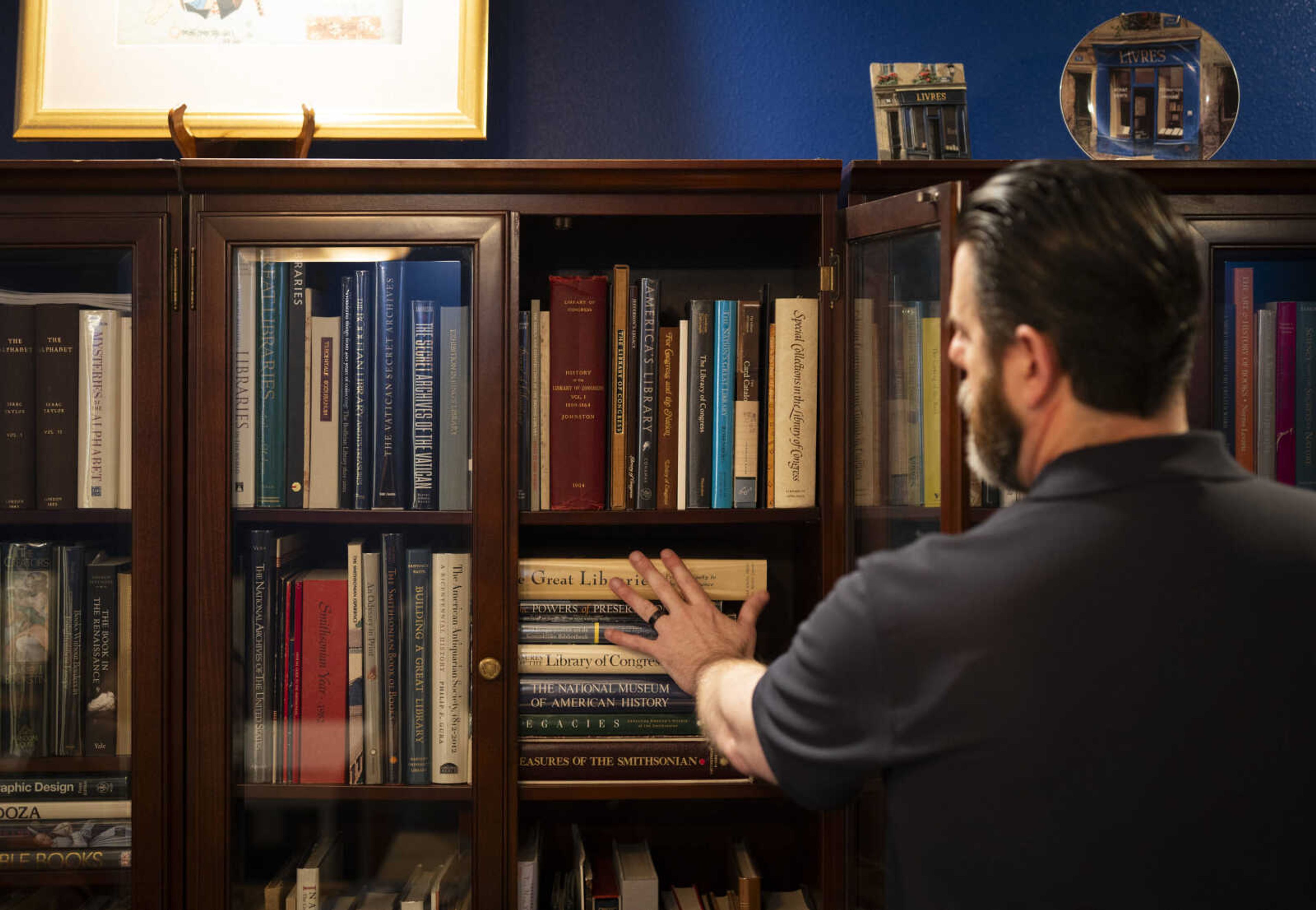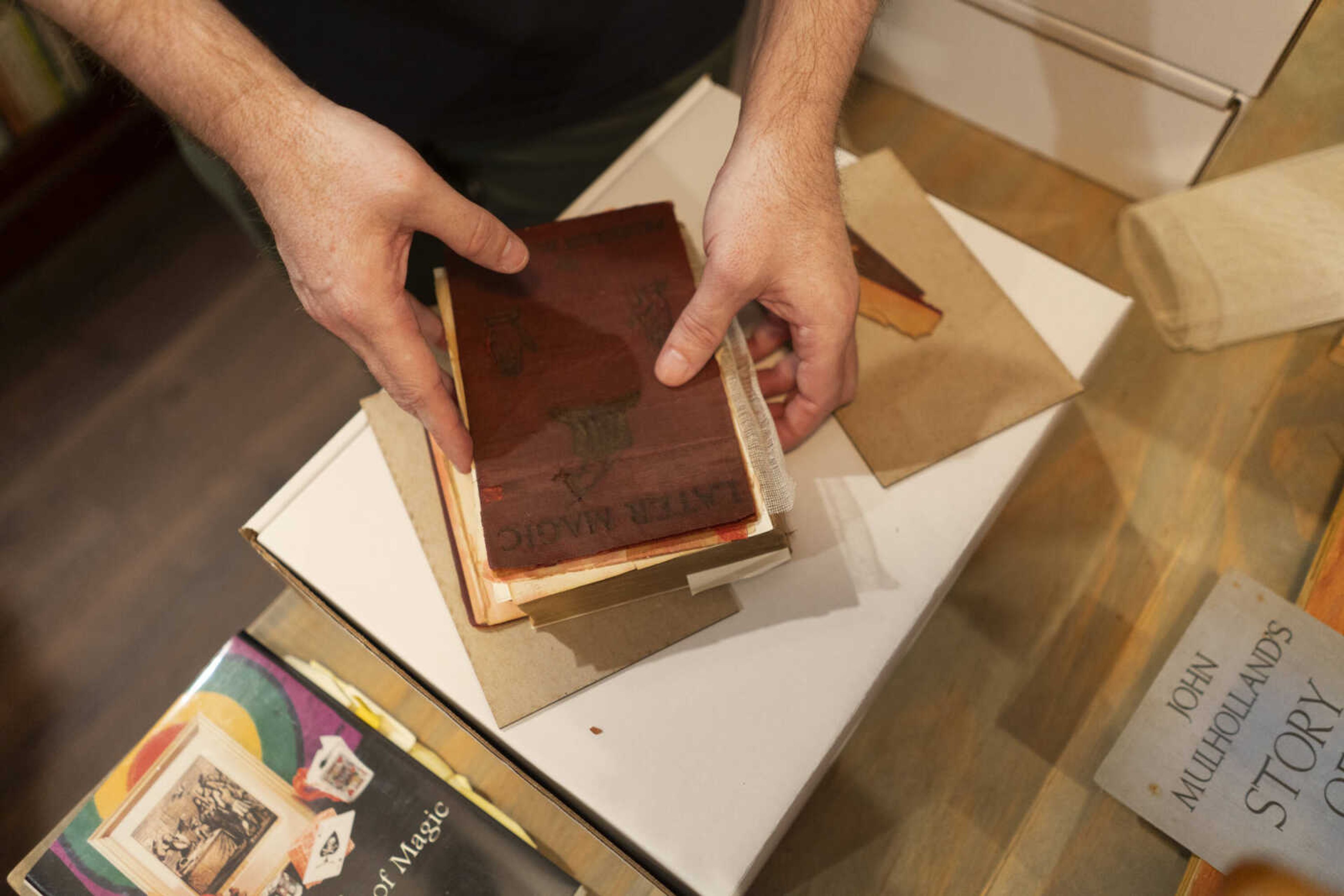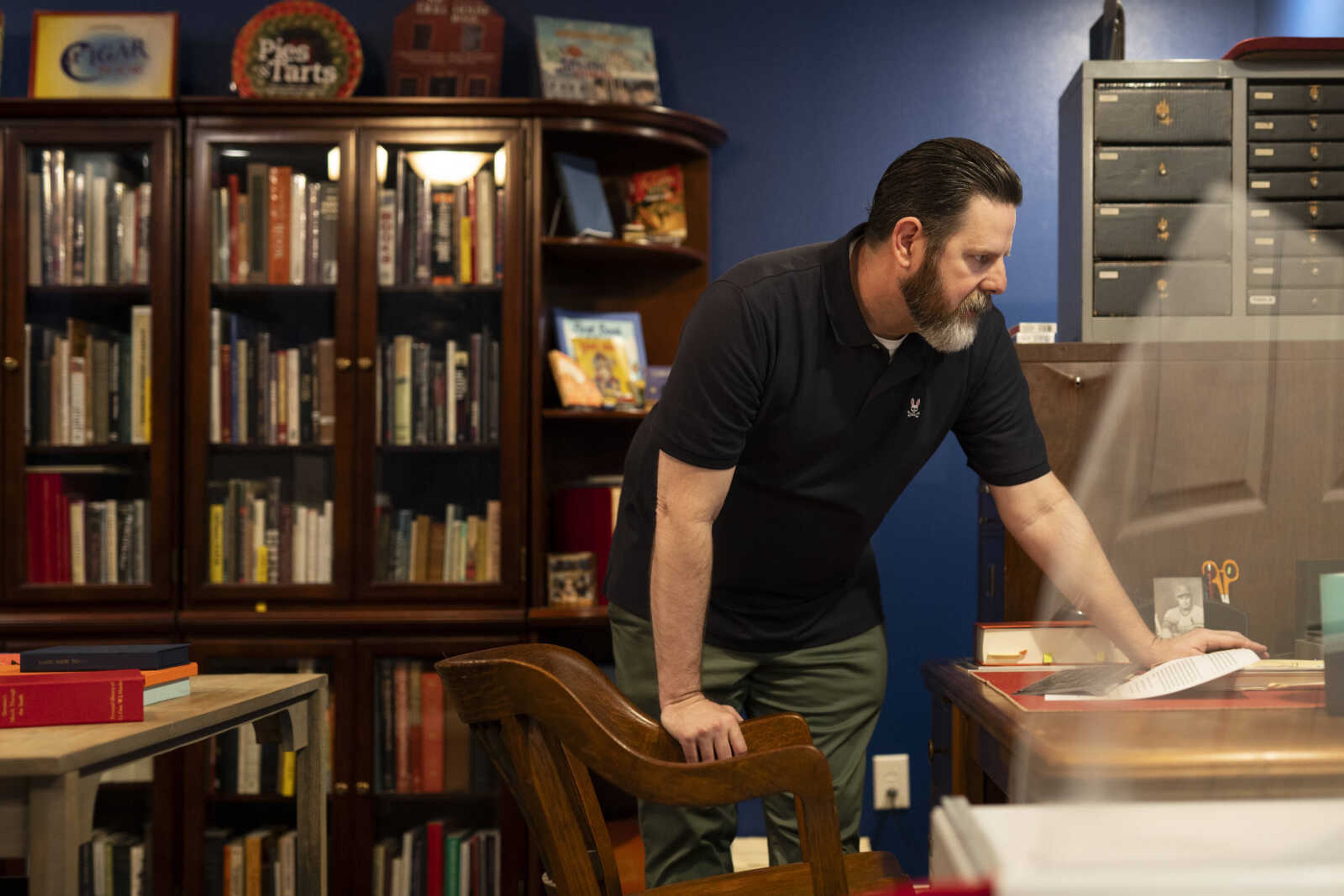A Tailor for Books: Gary Howard, Jr. restores books for himself, others
It all started with a love for magic. Then a love for magic history kept in books. Now, Gary Howard, Jr. cultivates a love for restoring books — his own and others’ — to preserve precious tomes for future generations. Howard first got into book restoration after reconnecting with his mentor — magician, collector and book restorer Leo Behnke — around 2017. ...
It all started with a love for magic. Then a love for magic history kept in books. Now, Gary Howard, Jr. cultivates a love for restoring books — his own and others’ — to preserve precious tomes for future generations.
Howard first got into book restoration after reconnecting with his mentor — magician, collector and book restorer Leo Behnke — around 2017. Behnke, whom Cape Girardeau magician Bill Coomer introduced Howard to, taught Howard how to catalogue, clean and care for books through visits Howard made to Behnke’s home in Las Vegas. The only person he ever trained, Behnke gave two and a half tons of his own books to Howard last year before Behnke’s death. Howard also learned about book restoration by buying books at thrift stores, taking them apart and putting them back together.
Howard thinks about book restoration through metaphor, comparing it to carpentry or tailoring.
“[Leo] always taught me how to use a knife [on book restoration projects],” Howard says. “One day, I started using scissors instead of a knife. And I remember having this come over me: I felt like a tailor, like I was customizing a suit. [Now,] I almost prefer to use scissors on these detail cuts versus a knife, because in a way, I am making a suit for this book.”

People get books restored for one of two reasons, Howard says: love or money. Howard especially enjoys working with people who bring a book to him for sentimental reasons and want books restored like their family Bible, their grandmother’s stained cookbook or a novel given to them by a loved one who is now deceased. Some people also want to restore a book so it becomes beautiful again or because it has historical significance. Others such as book dealers and collectors get books restored so they can make a profit or protect their investment.
Sentimental book restoration projects rank at the top of Howard’s list for favorite restorations he’s undertaken. A few of his other favorites include a book from the 1893 Chicago World’s Fair the Library of Congress printed a missing page for, books from the Civil War and scrapbooks for a private client.
When he assesses what repairwork a book needs, Howard looks at it from the outside in; when he repairs it, he works from the inside out. He says some of the most common repairs include a loose hinge, a split hinge, and torn or loose pages. He also recreates casing, cuts new boards for covers, repairs covers with acrylic paint and colored pencil, sews pages with thread, puts hollows on spines, and cleans dirt off of edges.
“A book will tell you what it needs,” Howard says.
The main preservation aspect of his work is to do no harm; anything he does has to be reversible, and he also wants to make it clear in his work that the book has been restored and is not original. Howard works with book owners to make sure they’re on the same page about the goal of the restoration and to choose the colors, trimming and types of binding used in the process.

It’s important to catch things that are wrong with an important book such as a family heirloom early and to get it fixed when it’s first noticed, because it will only deteriorate more as time goes on, Howard says.
If restoring a book would do more harm than good, or if an owner decides not to restore a book but still wants to preserve it, Howard creates three alternative options: a custom clamshell that encases the book and looks like a book sitting on a shelf, a slipcase a book can fit snugly into and a phase box with four flaps that fold out flat to hold loose manuscript pages.
Howard says there’s a story behind every book; books are important because they tell us where we come from, helping us to not repeat negative aspects of culture. They also help us understand past generations’ perceptions that show us how our thought processes developed as a culture over time.
“It’s a fascinating hobby. It’s a fascinating career, and ultimately, we look at it as we’re just a small part in the preservation of future generations and being able to hand that off,” Howard says. “That’s what I love about it, is being able to be a part of being that caregiver and that caretaker.”

__How to handle books so they last__
Think books are made to be opened by cracking the covers, or that you can cram as many books as possible onto a shelf? Think again. There’s an art to the way to handle books, so they stay in mint condition.
“Think of your book as a living thing,” book restorer Gary Howard, Jr. says.
Here, Howard shares tips for opening and shelving books:
__1. Take the dust jacket off while reading.__
Howard says the dust jacket is meant for when you’re storing the book, not for when you’re reading it. So, while you’re actively reading the book, take the jacket off.
__2. Be sure there is room on the shelf behind your books.__
This helps keep an airflow around the books to prevent mildew or the spreading of bug infestations. Also give books room to breathe from side to side on the shelf by having a 10% air cushion. You can stack larger books on top of each other, with spines facing outward.
__3. Open a book slowly.__
When opening a new book for the first time, set it on its spine and gradually page through the book a few pages at a time, alternating pages from the front and then pages from the back. If the book is especially thick or old, prop it between two pillows while opening it, as well as while reading it, to help keep the binding intact.
__4. Get a book off of a shelf using a two-step process.__
Headbands at the top of books’ spines are there so the spine doesn’t rip while pulling the book off of a shelf. But if you’re getting the book off of the shelf properly, the headband shouldn’t be needed. To properly pull the book from the shelf, push the books on either side of it back, and then pull the book you want from the middle of the spine. Or, place your finger two inches in at the top of the book you want to get off of the shelf, tilt the book back, reposition your two fingers on the side of the book and slide it out.
__5. Reshelve a book using a two-step process.__
To put a book back on the shelf, set the book back on the shelf and push it into place from the middle of the spine and then grab the books on either side of the book from behind and push them back into place.
Connect with the Southeast Missourian Newsroom:
For corrections to this story or other insights for the editor, click here. To submit a letter to the editor, click here. To learn about the Southeast Missourian’s AI Policy, click here.










